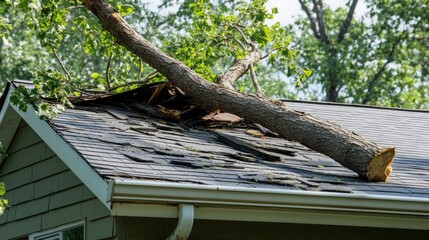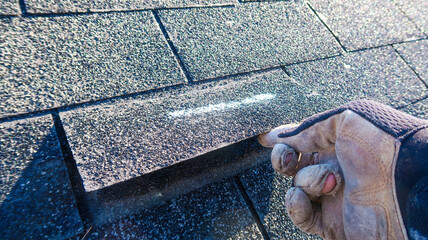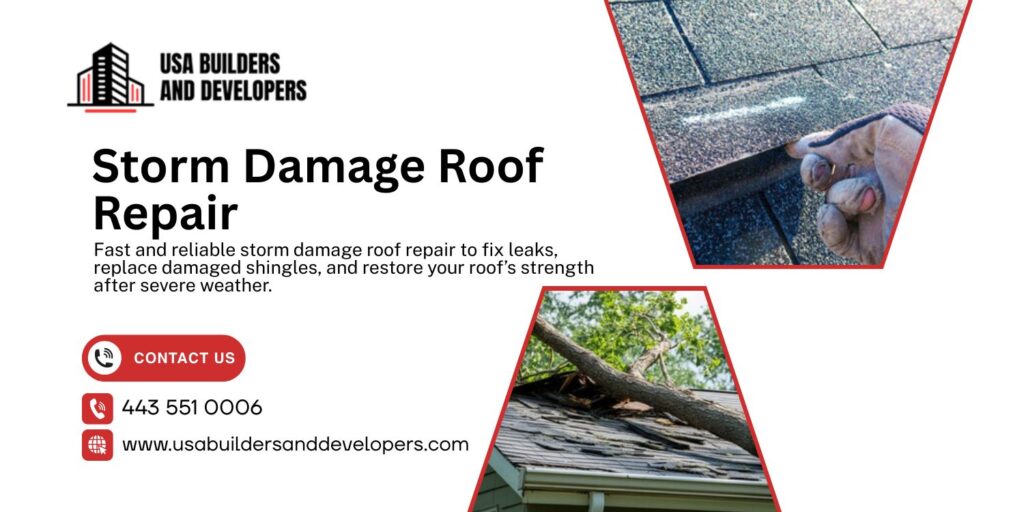Storm damage roof repair is one of the most important steps homeowners must take after heavy rain, wind, or hail hits their property. A damaged roof can quickly turn into leaks, structural issues, and expensive repairs. Understanding what to do, how much repairs cost, and which solutions work best helps you protect your home and restore safety fast. In Maryland, storms can strike unexpectedly, so having the right information prepares homeowners to act at the right time.
USA Builders and Developers provides expert roofing services in Maryland, helping homeowners restore their roofs quickly with professional repair solutions.
Why Storm Damage Needs Fast Repair
Storms can damage a roof in minutes, but the consequences last much longer if repairs are delayed. Even small cracks or missing shingles allow water to enter the home. This moisture travels through the roof deck, walls, and insulation, leading to mold, rot, and interior damage.
Many homeowners don’t notice issues immediately, but storm damage often appears in the form of:
- Loose or missing shingles
- Water stains on ceilings
- Damp insulation
- Peeling paint near roof edges
- Sagging roof areas
- Granules collecting in gutters
Ignoring early signs can turn a simple repair into a full roof replacement. That’s why fast action is essential.
Types of Storm Damage Homeowners Should Look For
Different storms affect roofs in different ways. Understanding the type of damage helps you choose the best repair solution.
1. Wind Damage
Strong winds can lift shingles, break sealant strips, or completely detach roof sections. Exposed underlayment allows water to seep inside.
2. Hail Damage
Hail leaves dents, cracks, or punctures in shingles. These weak points trap moisture and speed up roof aging.
3. Heavy Rain Damage
Continuous rainfall increases the risk of leaks, clogged gutters, and slow water absorption that weakens the roof deck.
4. Falling Tree Damage
Branches or entire limbs can crush roof surfaces, requiring immediate emergency repair.
5. Ice & Snow Damage
Ice dams force melting snow under shingles, causing hidden water infiltration.
Each problem requires fast inspection and repair to avoid long-term harm.
What To Do Immediately After Storm Damage
When a storm ends, homeowners should take a few simple steps to ensure their safety and protect their property.
- Inspect from the Ground: Never climb a roof right after a storm. Instead, look for visible issues from the ground such as missing shingles, broken gutters, or debris.
- Check for Interior Signs: Look inside the home for stains, small drips, peeling paint, or damp areas.
- Take Pictures and Videos: This helps with insurance claims and gives contractors clear evidence of damage.
- Call a Professional Roofing Contractor: Licensed roofers can perform a safe, detailed inspection and identify hidden problems homeowners often miss.
Key Benefits of Fast Storm Damage Roof Repair
- Protects Insurance Claims
Documenting damage and repairing quickly helps homeowners meet insurance deadlines and avoid claim denials.
- Prevents Water Damage
Quick repairs stop rain from entering your home, protecting walls, insulation, and electrical components from costly damage.
- Avoids Structural Problems
Fast action keeps cracks, loose shingles, and roof deck issues from spreading into larger structural repairs.


Best Storm Damage Roof Repair Solutions
Every roof requires a solution based on the type and severity of damage. These are the most effective repair options for homeowners in Maryland.
1. Shingle Replacement
Shingles are the first line of defense against storms. Missing, cracked, or curled shingles can expose the roof to leaks. Replacing them restores the roof’s protective layer and prevents water from penetrating the underlayment. This repair is often fast, affordable, and can stop minor damage from escalating into major issues.
2. Roof Leak Patching
Small leaks can be sealed before they spread. Contractors use durable roofing sealants and proper flashing to stop water entry.
3. Flashing Repair or Replacement
Flashing protects critical roof intersections from water intrusion. Storms can bend or dislodge it, creating weak points. Replacing or repairing flashing ensures tight seals around chimneys, skylights, and vents. This simple but essential step prevents hidden leaks that could damage your home’s structure over time.
4. Structural Roof Repair
When a storm damages the decking, rafters, or plywood, quick structural repair is crucial. Contractors remove compromised materials, reinforce weak areas, and replace any damaged sections. A strong roof frame ensures shingles stay secure and the roof can withstand future storms.
5. Emergency Tarping
Sometimes repairs can’t start immediately, especially during ongoing bad weather. Emergency tarping provides a temporary barrier, keeping rain and debris out. While not a permanent fix, it protects your home and gives you time to schedule full repair work safely.
6. Full Roof Replacement
For roofs with widespread damage or old materials, a complete replacement is the best solution. This involves installing new shingles, flashing, and decking. Full replacement restores maximum protection, improves curb appeal, and increases the roof’s lifespan. It’s the most reliable way to ensure your home is storm-ready.
Storm Damage Roof Repair Cost Breakdown
Roof repair costs depend on the type of damage, roofing material, and repair size. Here is a simple and easy-to-read table for better understanding:
| Type of Damage | Average Cost (USD) | Description |
|---|---|---|
| Minor Shingle Repair | $200 – $500 | Small cracks or missing shingles |
| Moderate Wind/Hail Repair | $500 – $1,500 | Multiple shingle replacements + sealing |
| Leak Repair | $300 – $900 | Patching leaks and fixing flashing |
| Structural Deck Repair | $1,000 – $3,000+ | Replacing damaged plywood or rafters |
| Full Roof Replacement | $7,000 – $15,000+ | Severe damage requiring new roofing |
Costs in Maryland may vary depending on roof size, materials, and contractor expertise.
How Long Does Storm Damage Roof Repair Take?
The repair time depends on the severity:
- Minor repairs: 1–3 hours
- Moderate repairs: 1 day
- Structural repairs: 1–2 days
- Full roof replacement: 1–3 days
Weather conditions also affect the timeline. Heavy rain or snow may delay work.
Insurance and Storm Damage – What Homeowners Should Know
Many homeowners don’t realize that insurance can cover storm damage if documented properly.
Here are the steps:
- Report the damage immediately.
- Take clear photos and videos.
- Let the insurance adjuster inspect the roof.
- Get a professional contractor estimate.
- Maintain communication until the claim is approved.
Timeliness is the key to avoiding claim denial.
Final Thoughts
Storm damage roof repair prevents bigger problems, protects your home’s value, and ensures your family stays safe. Acting fast makes the biggest difference between a minor repair and an expensive replacement. Whether you’re dealing with wind, hail, rain, or fallen branches, choosing the right repair solution helps restore your roof quickly and efficiently. For Maryland homeowners, getting professional help ensures long-lasting protection and peace of mind.

